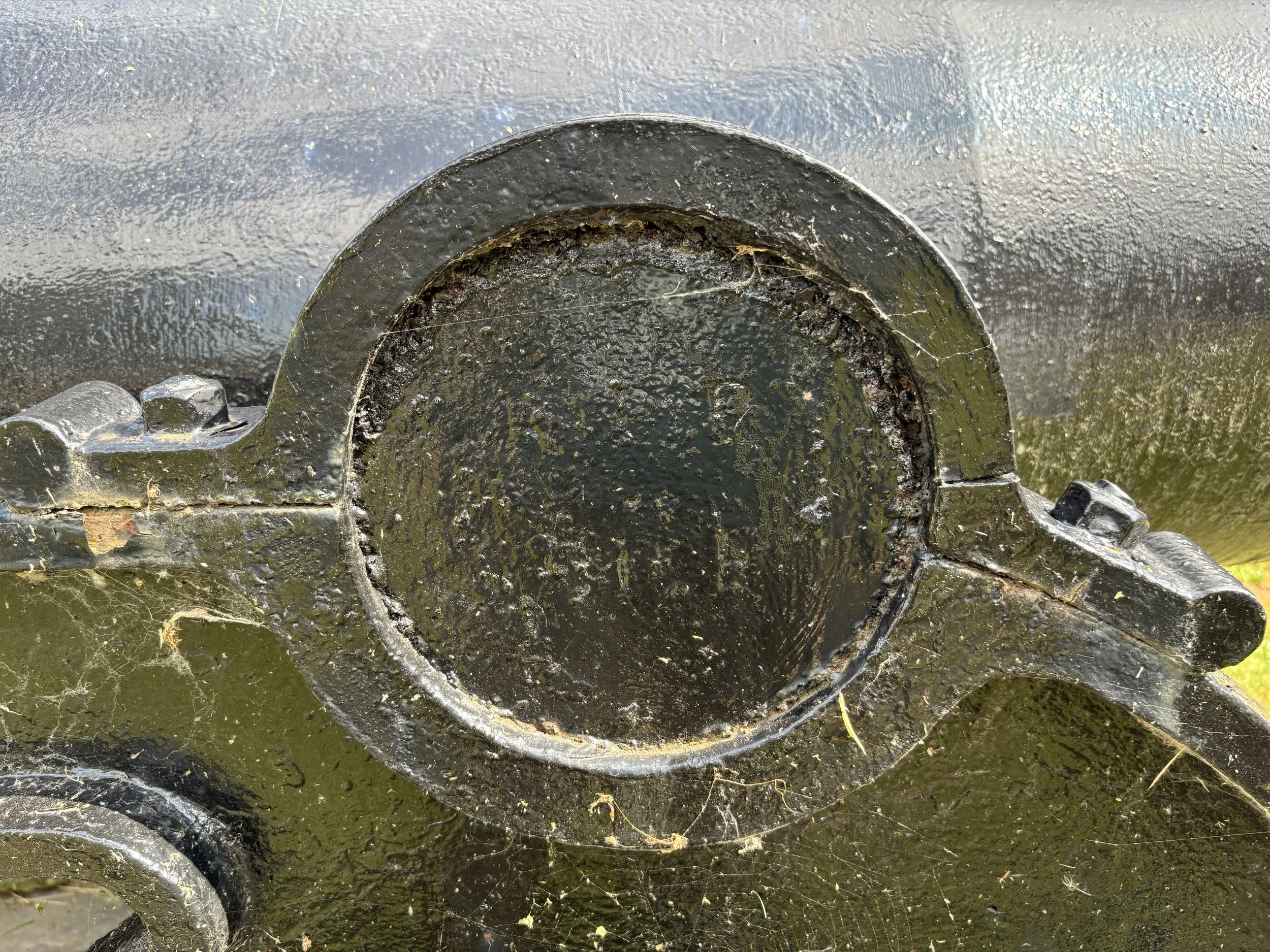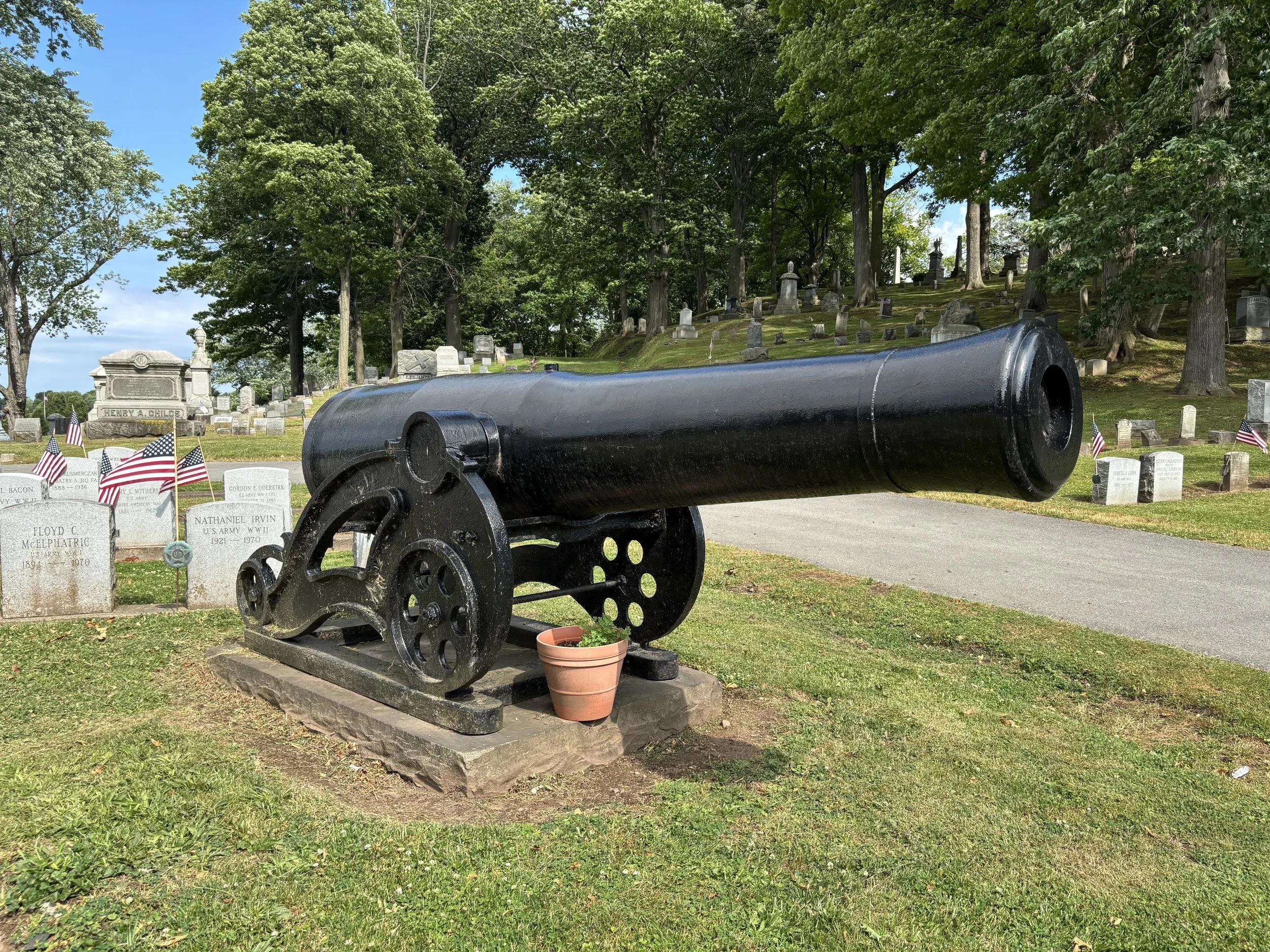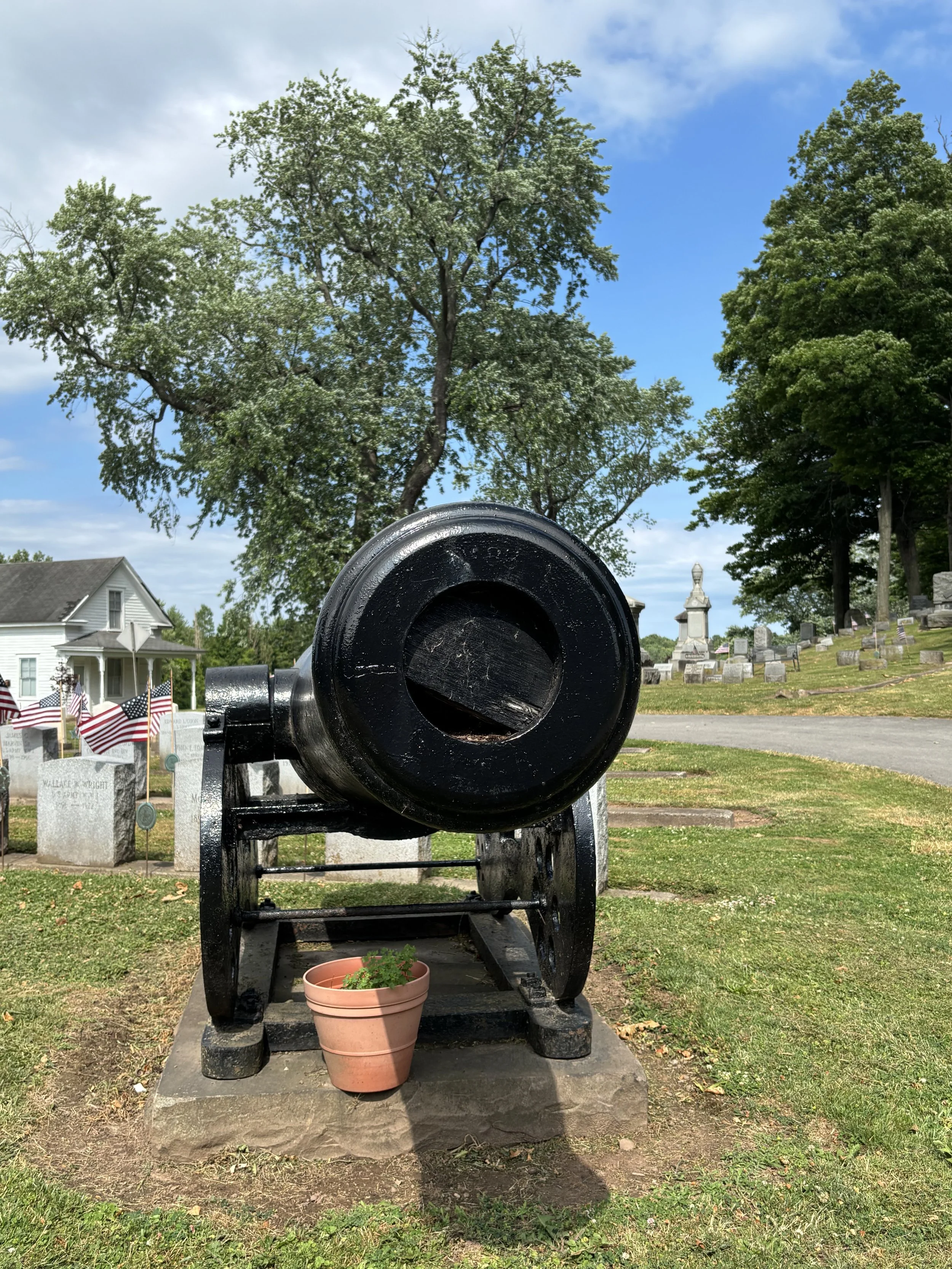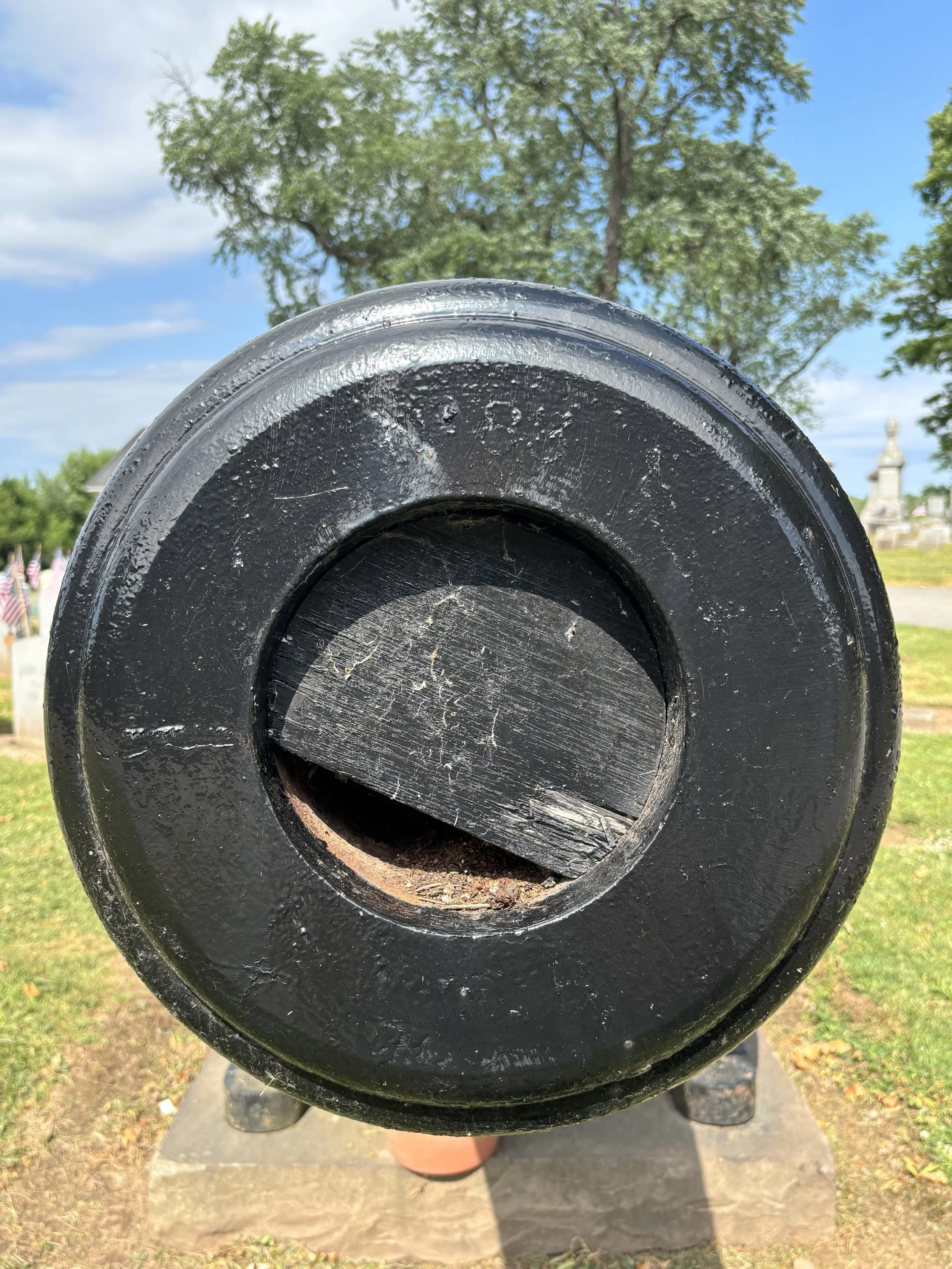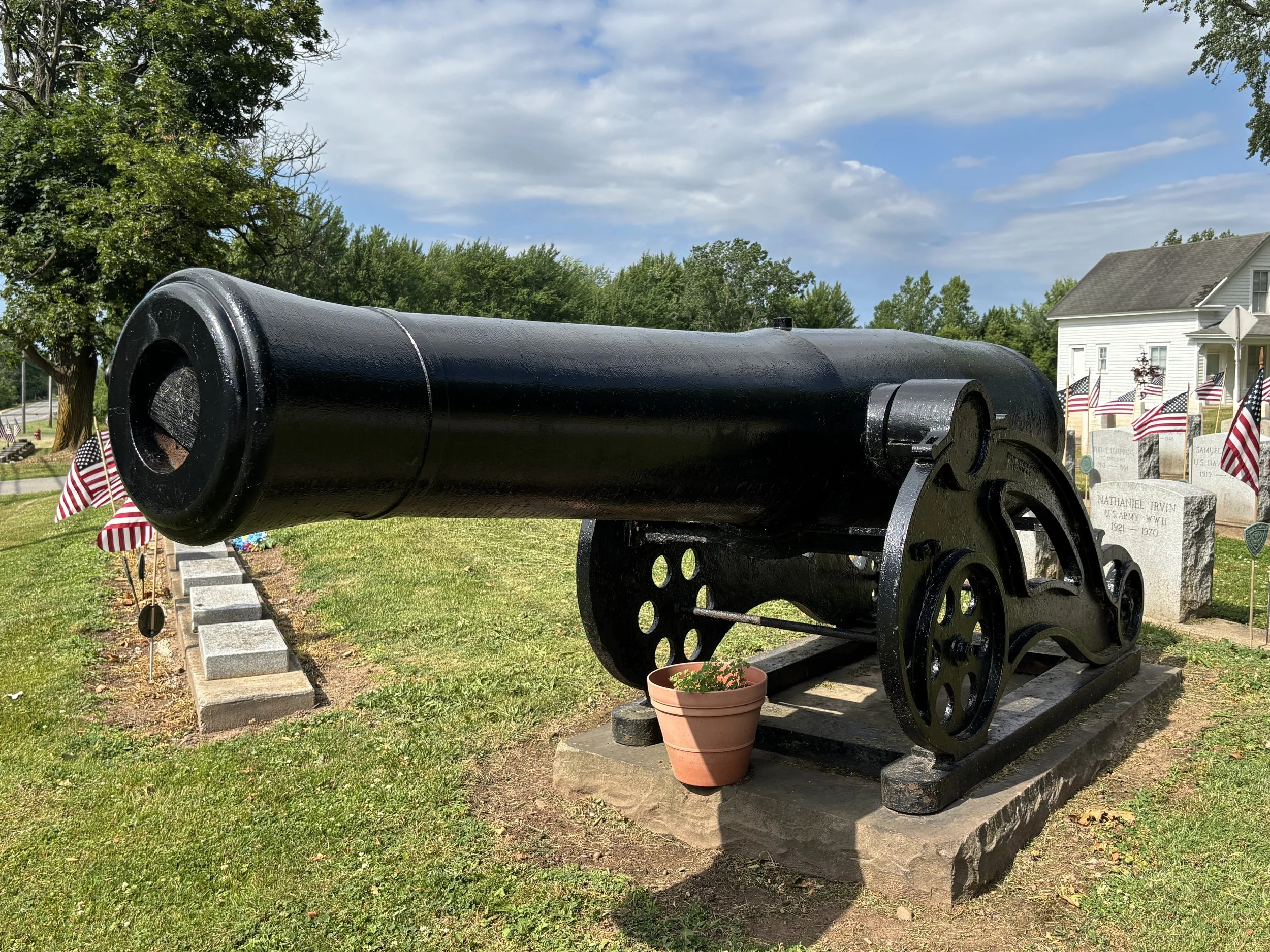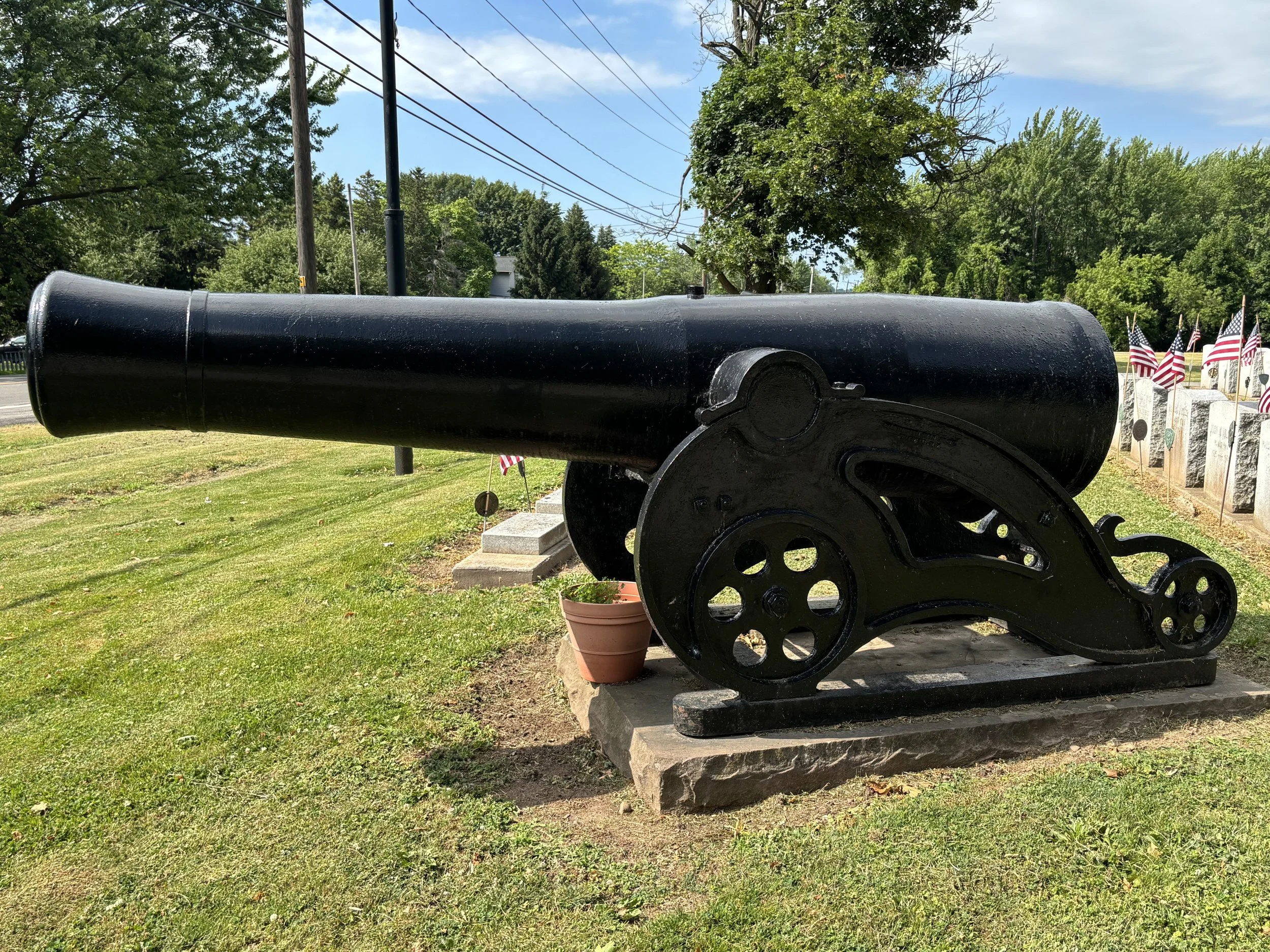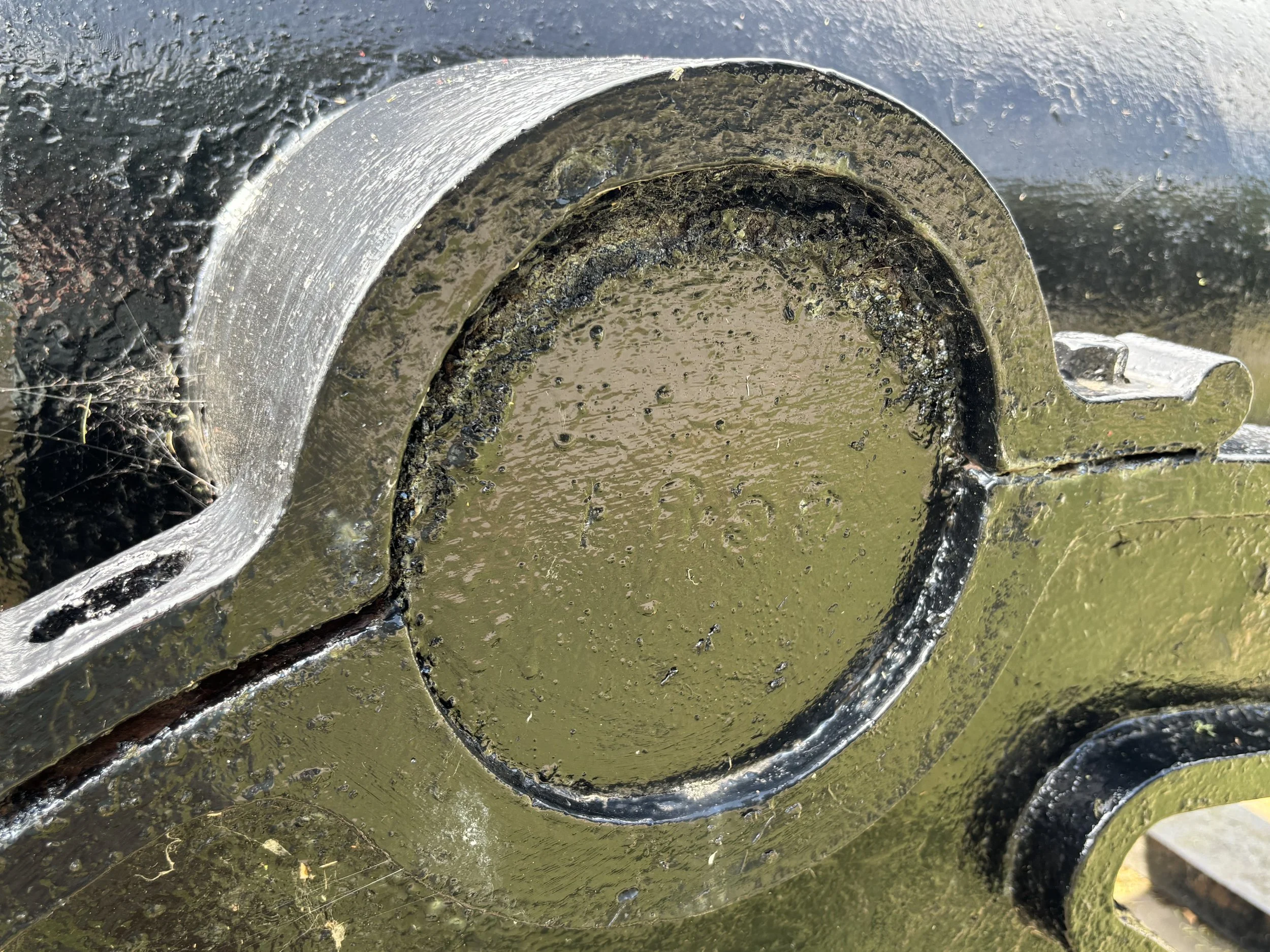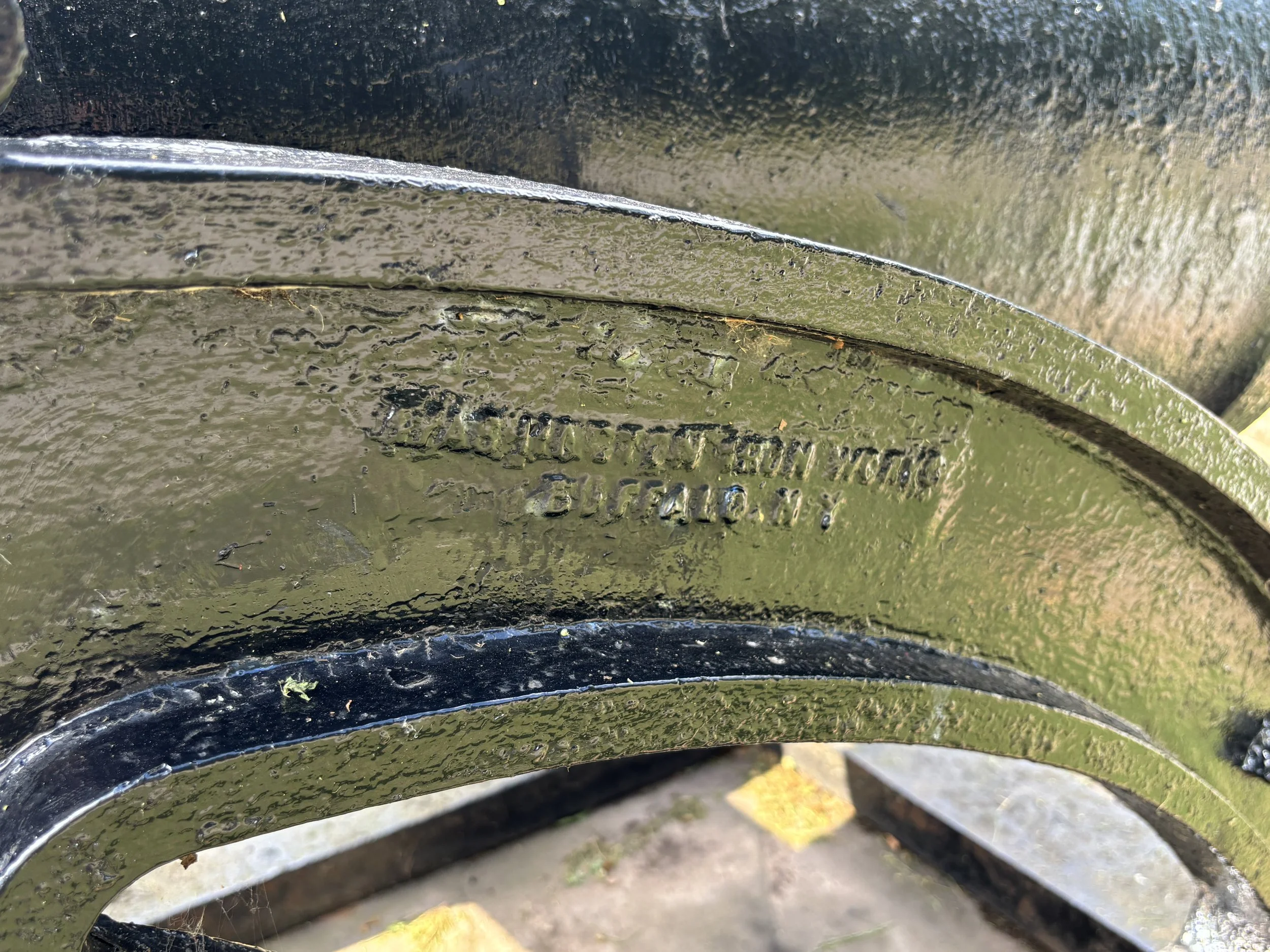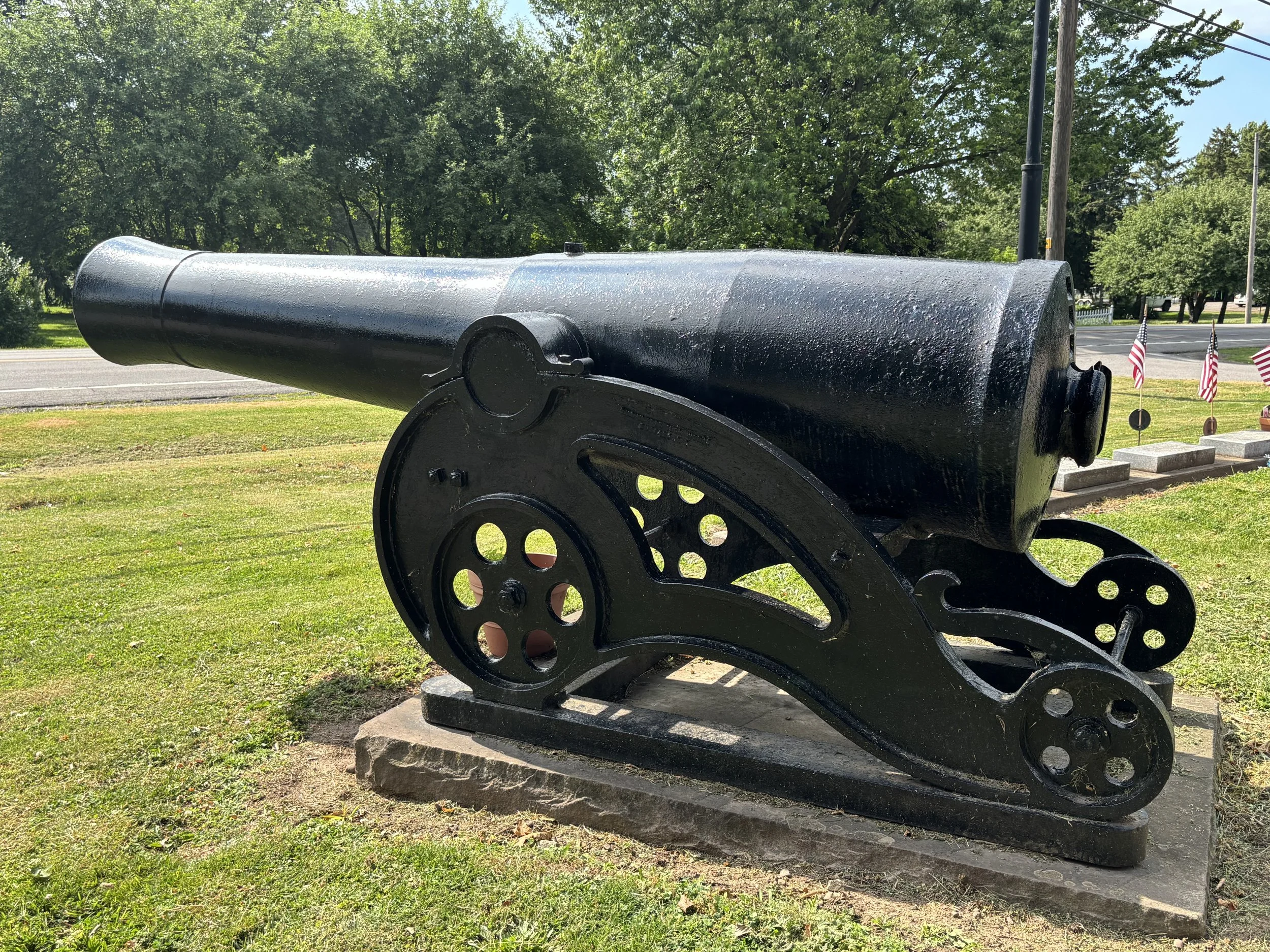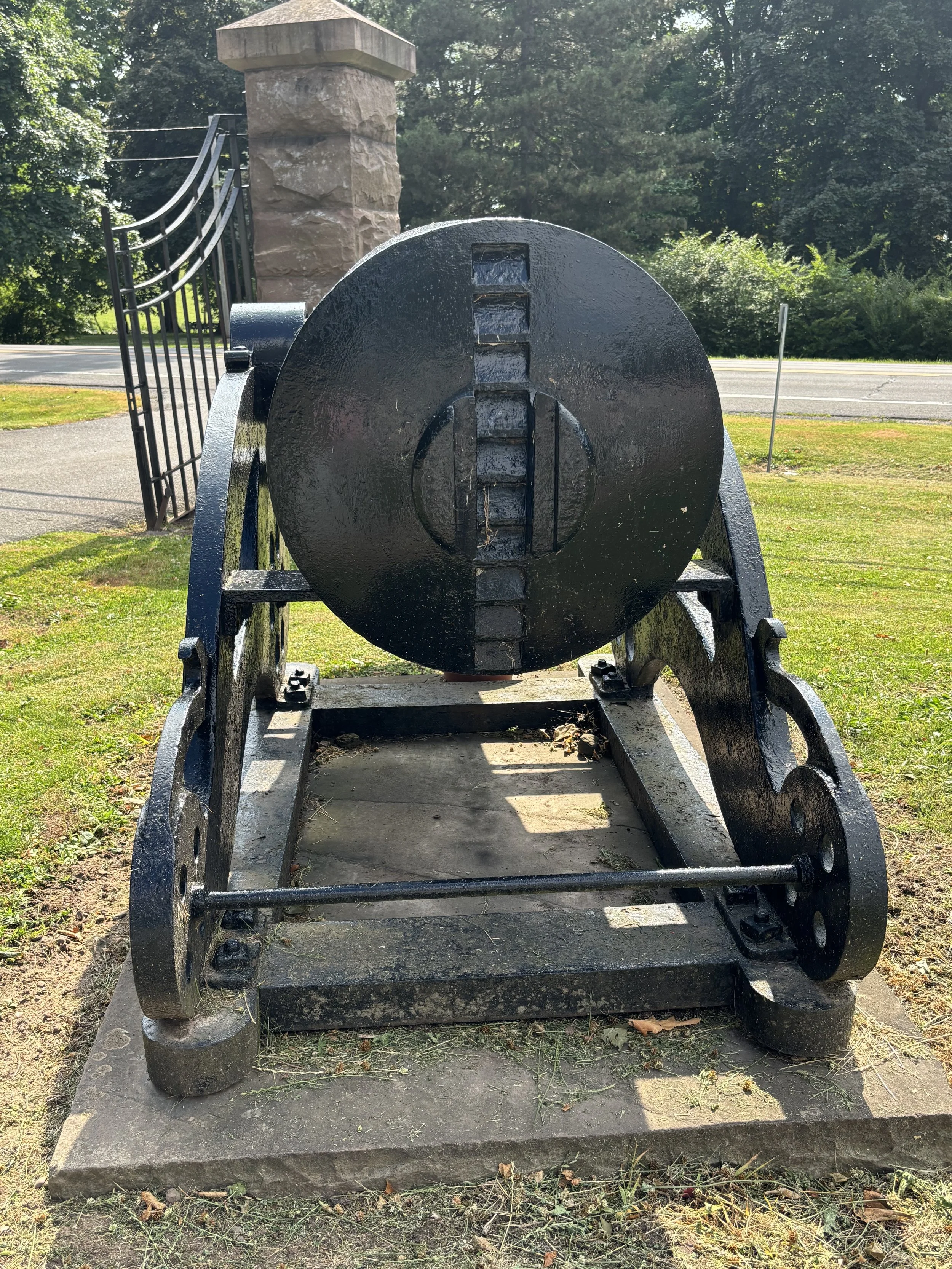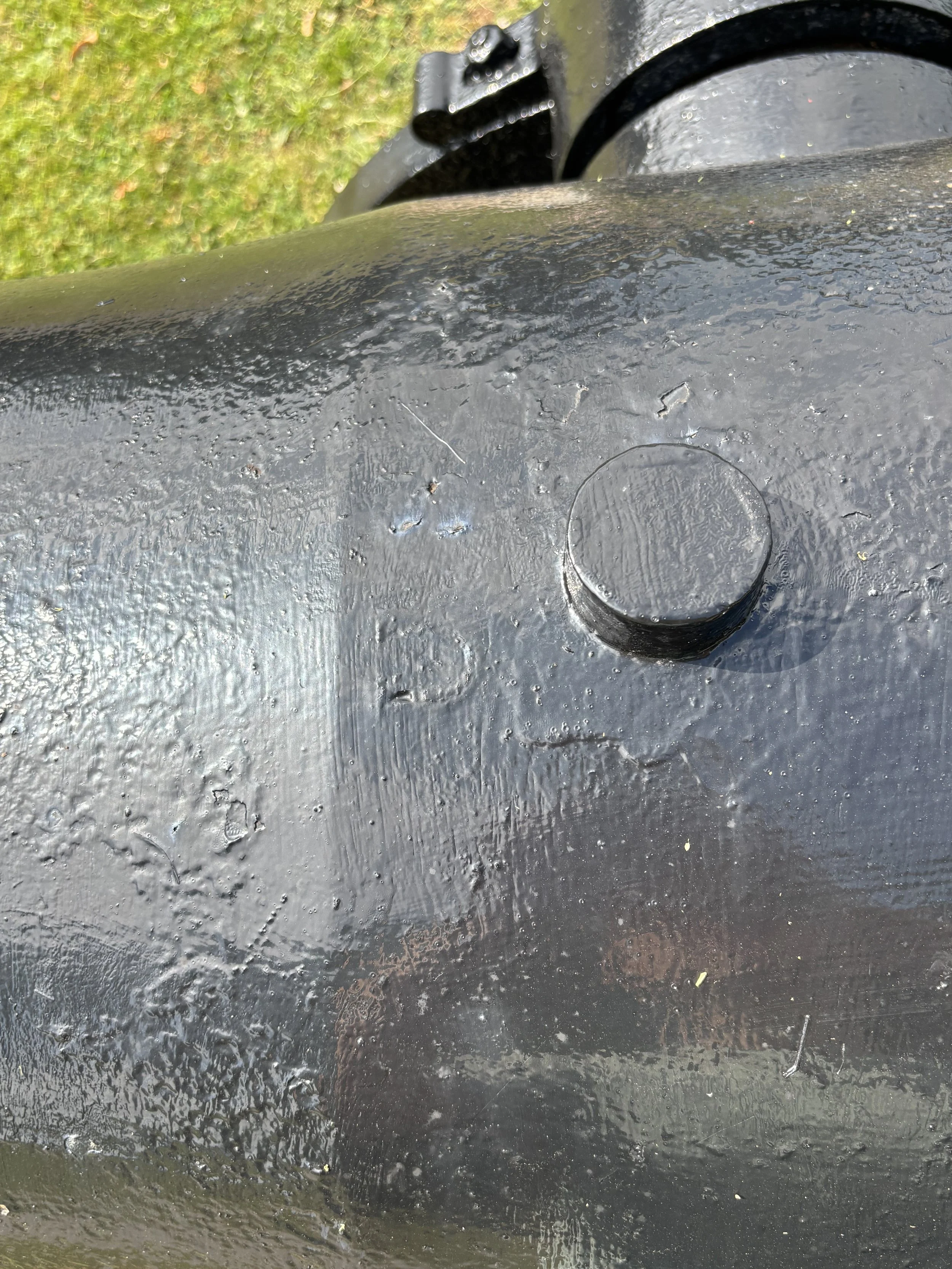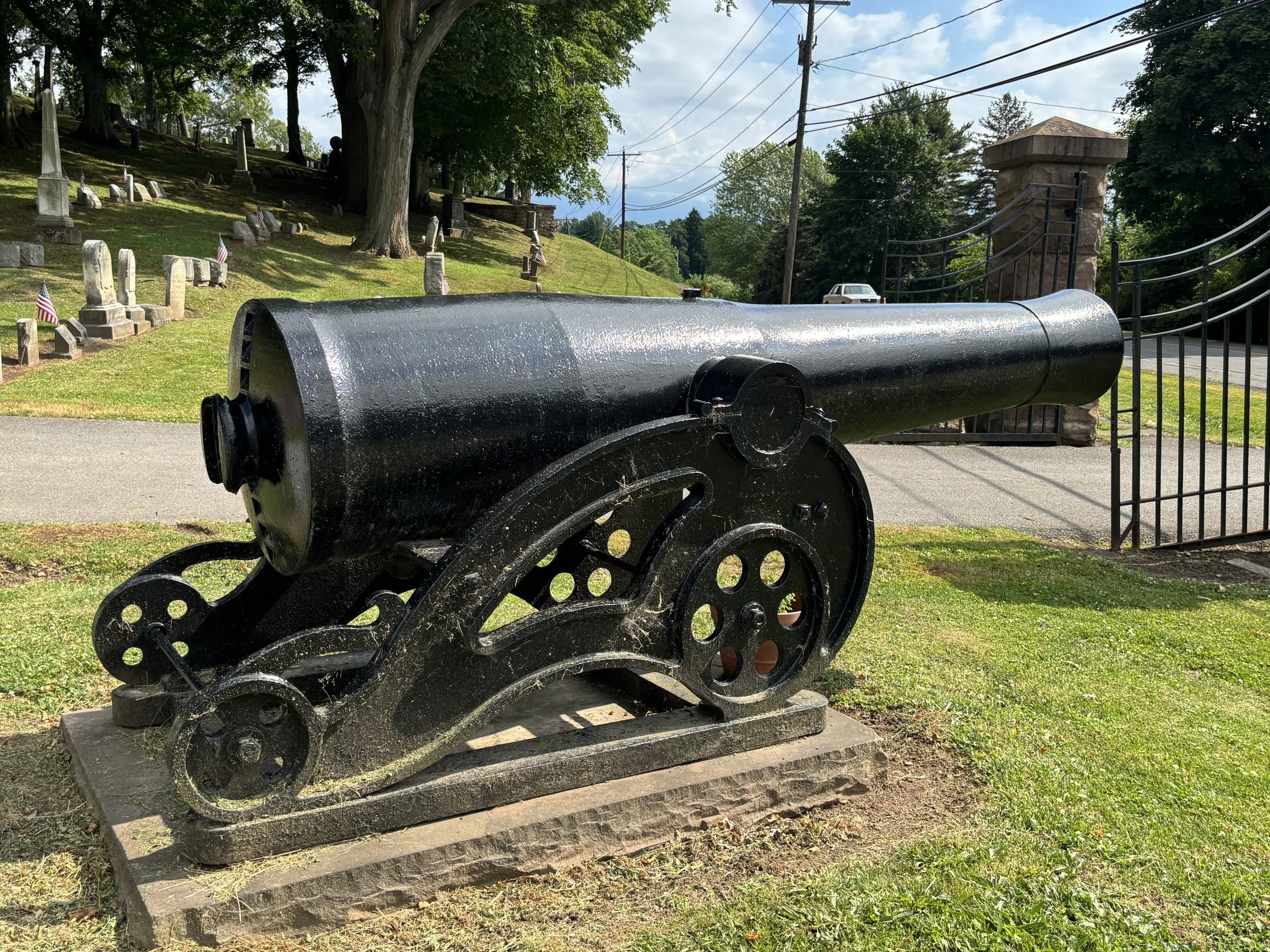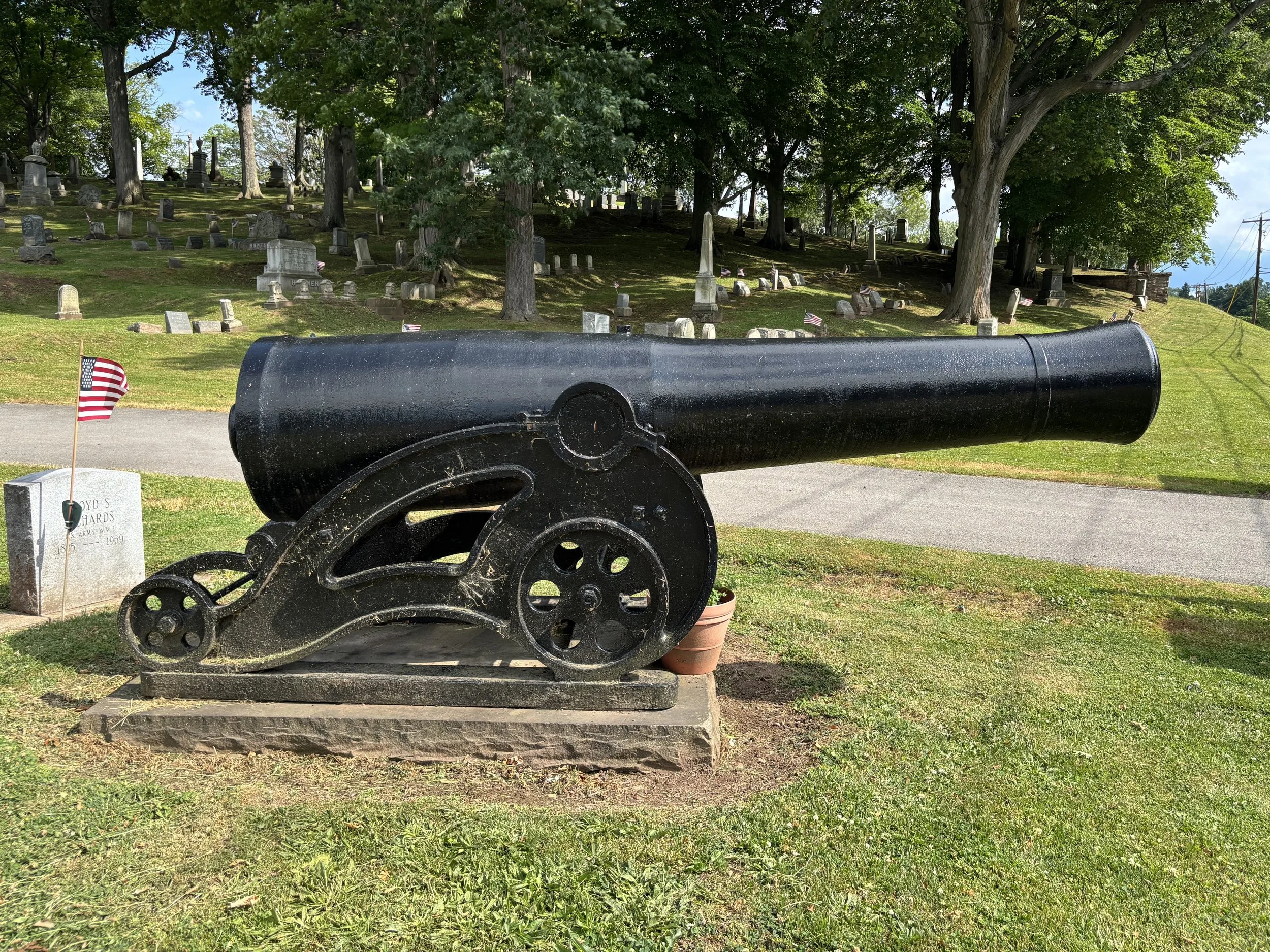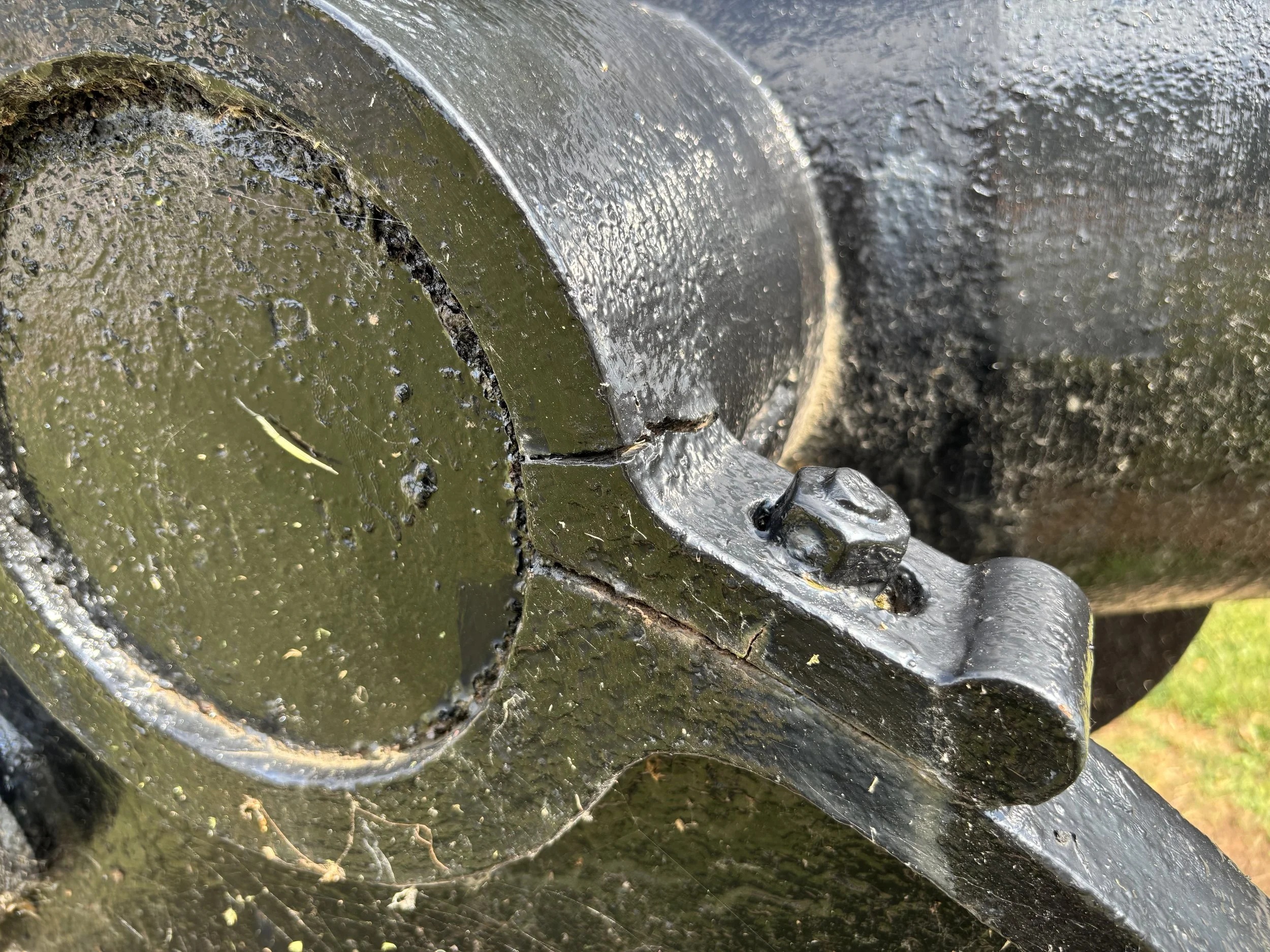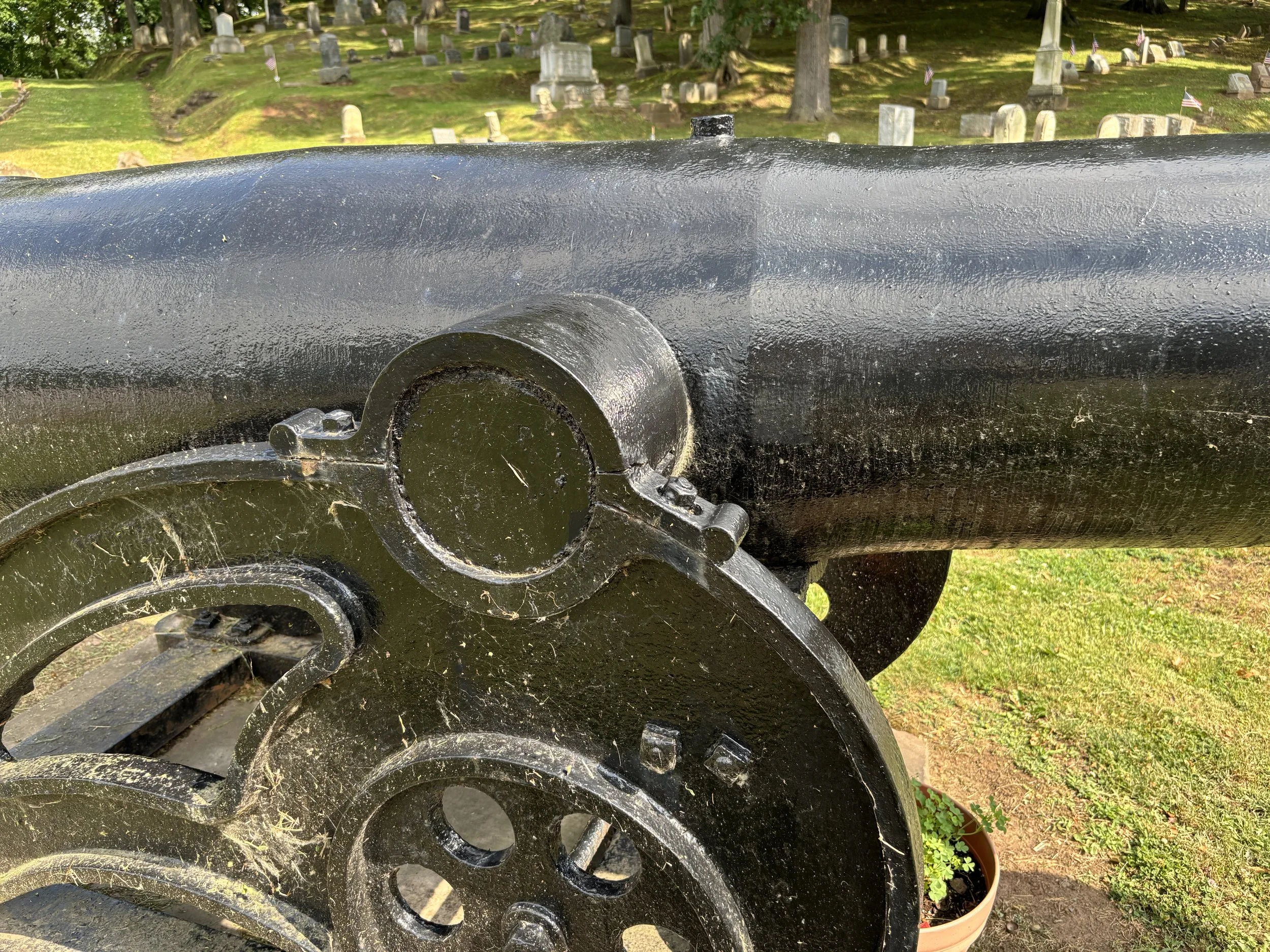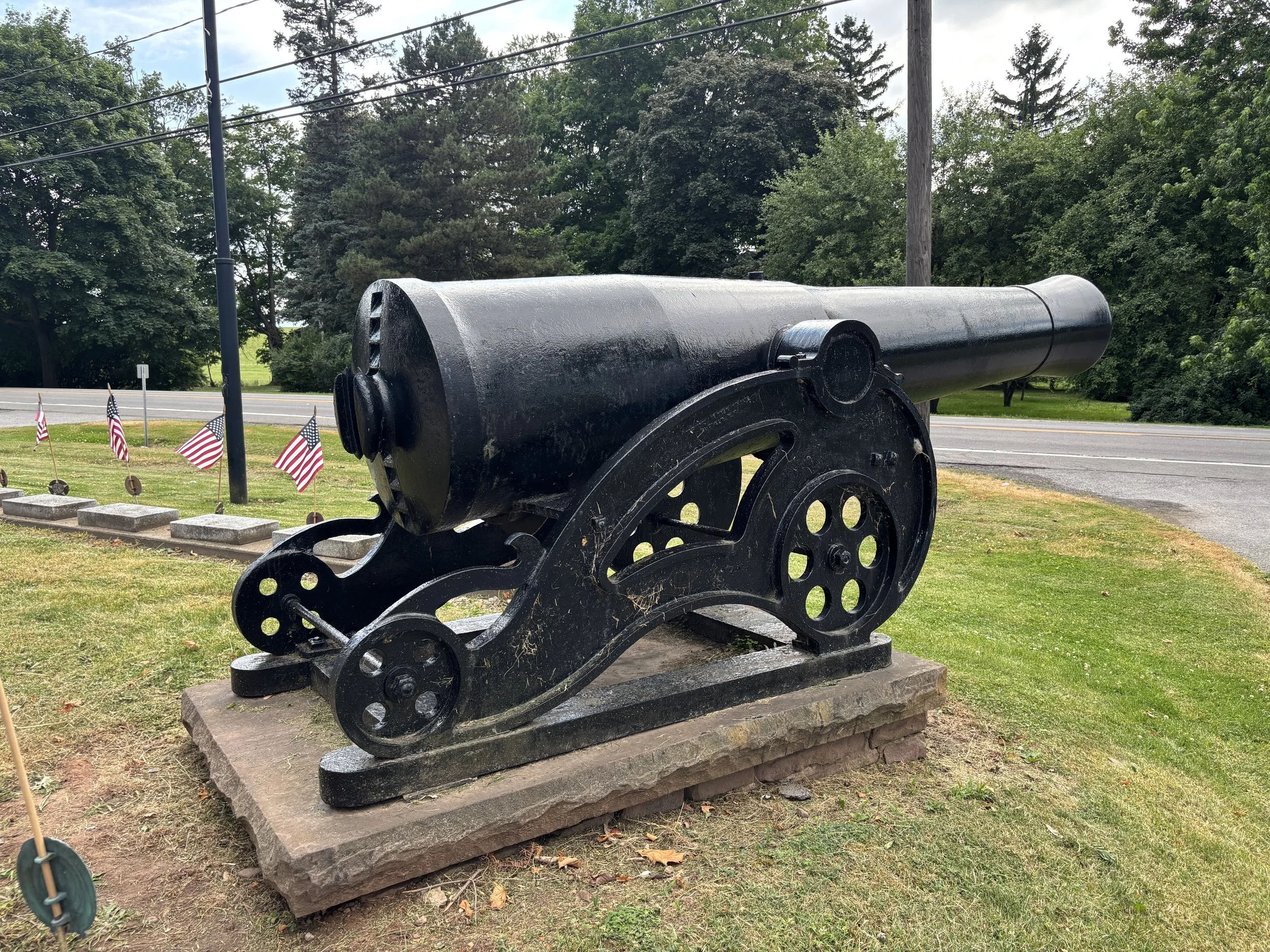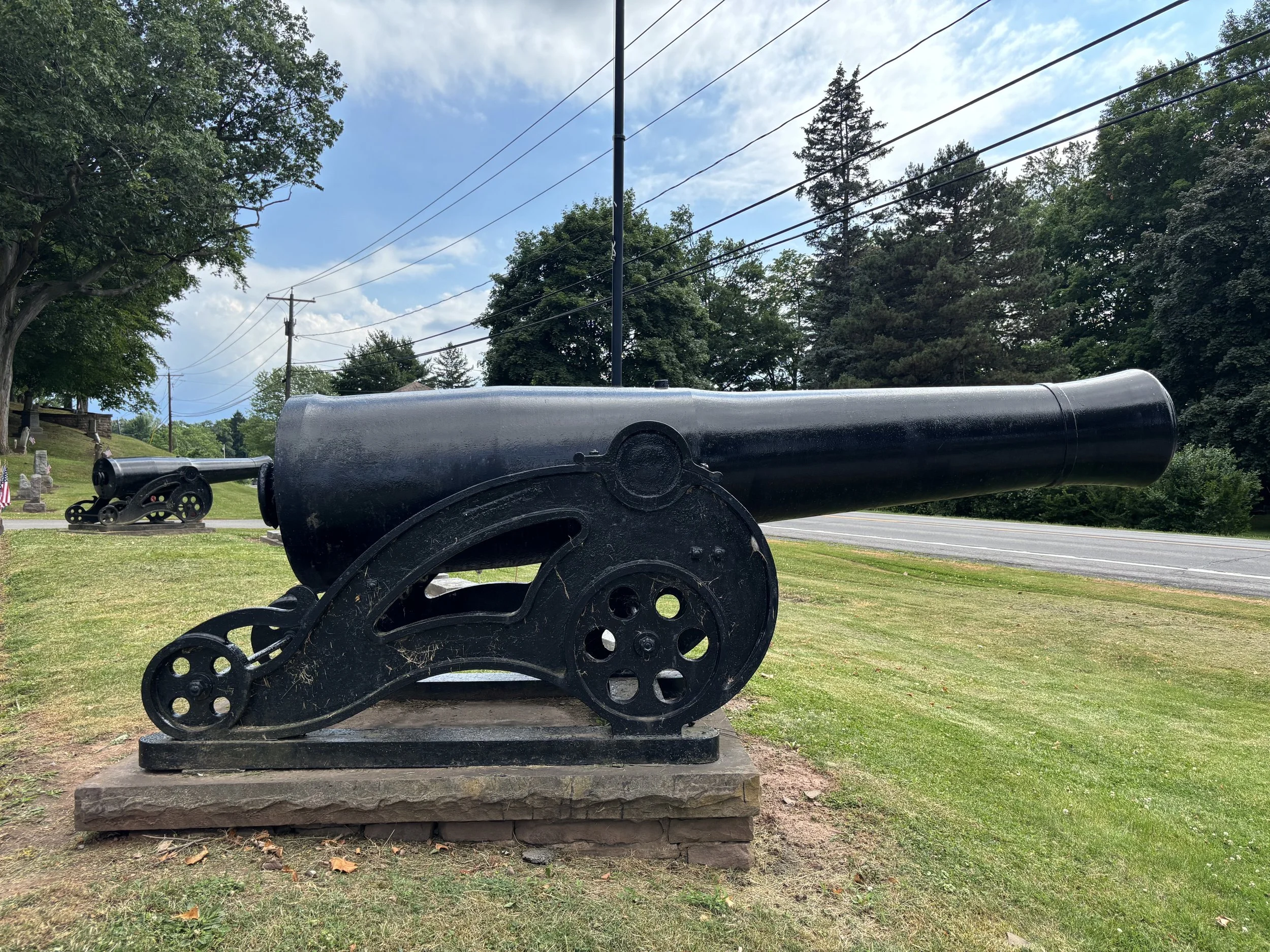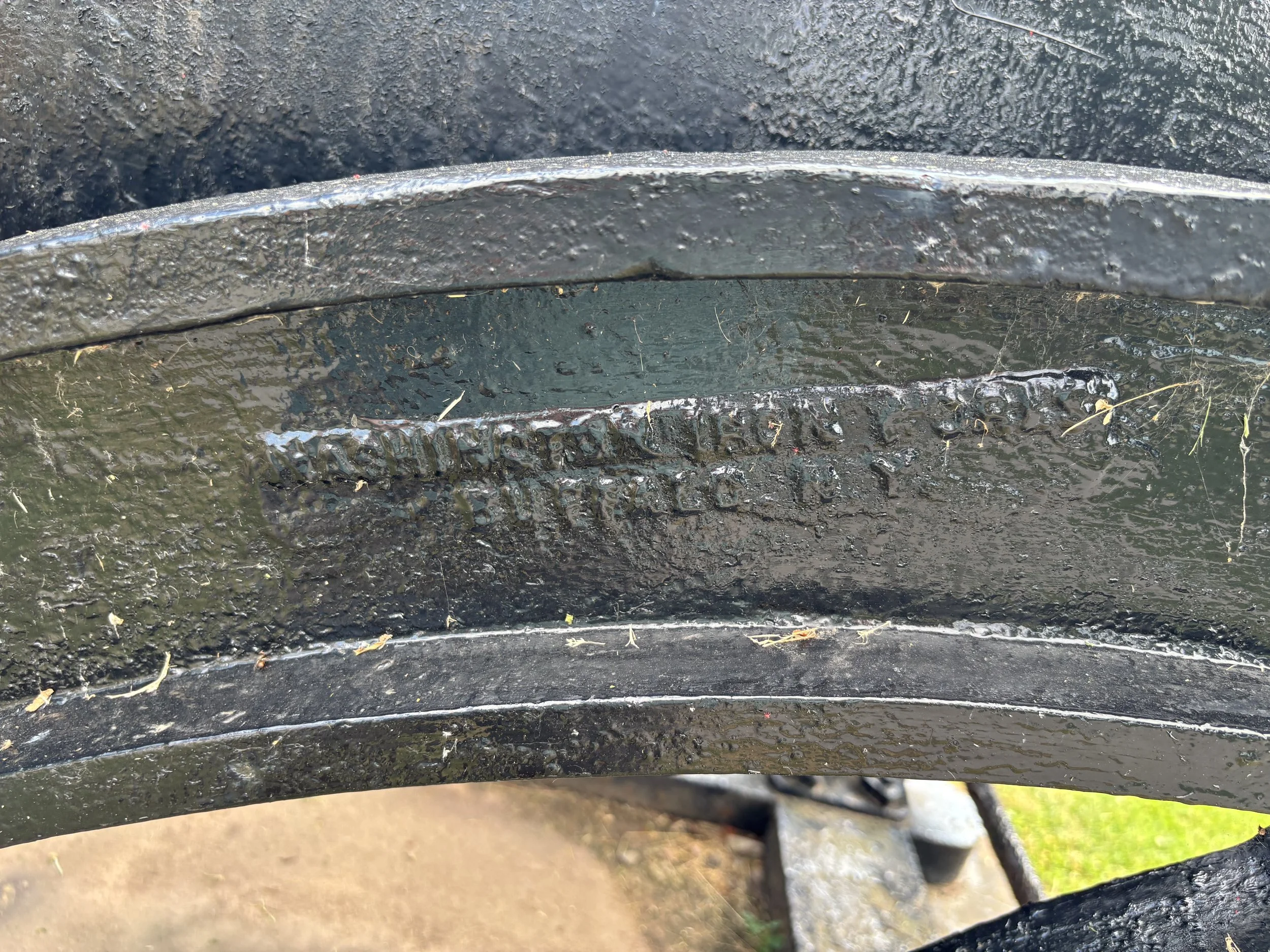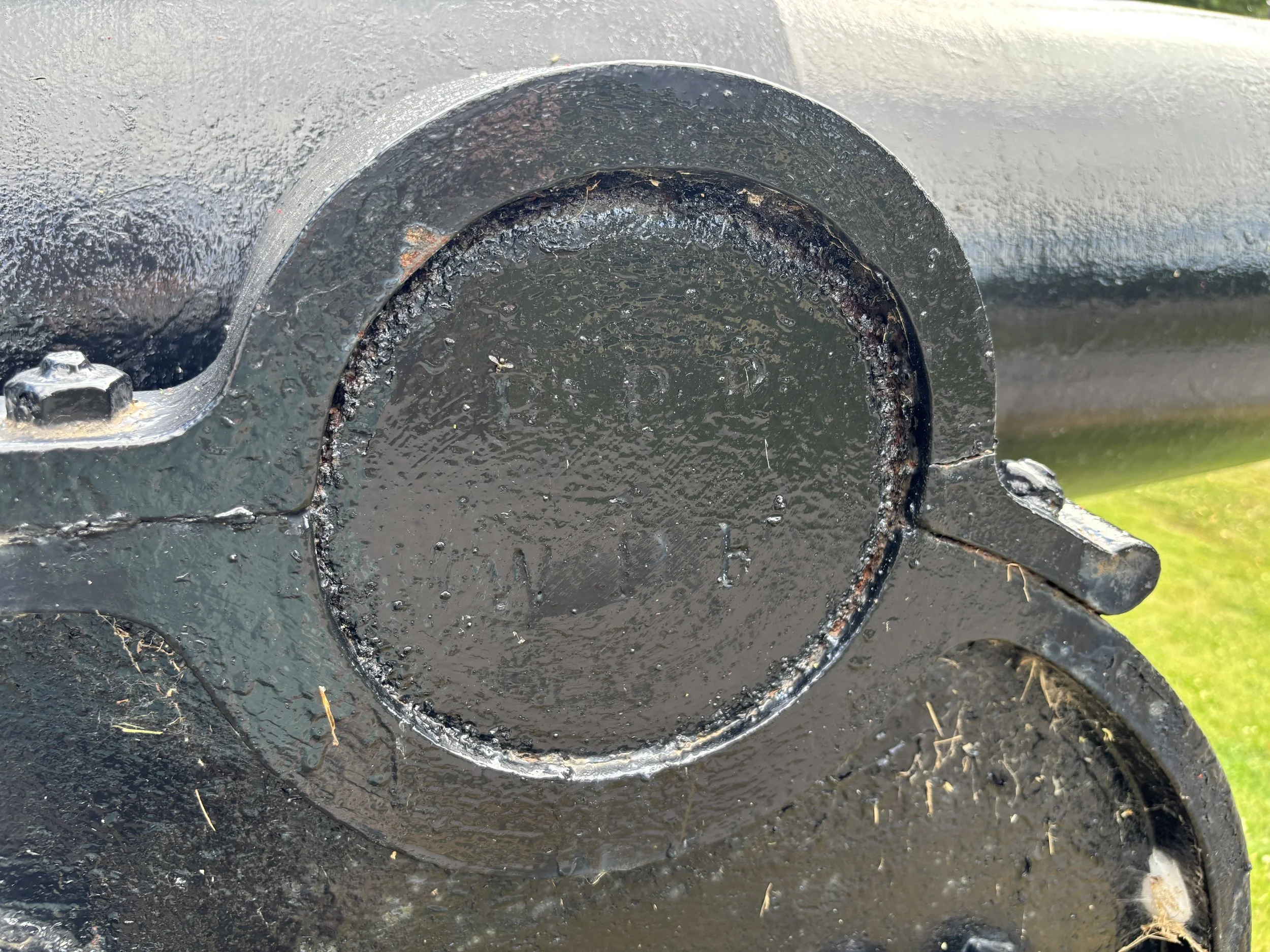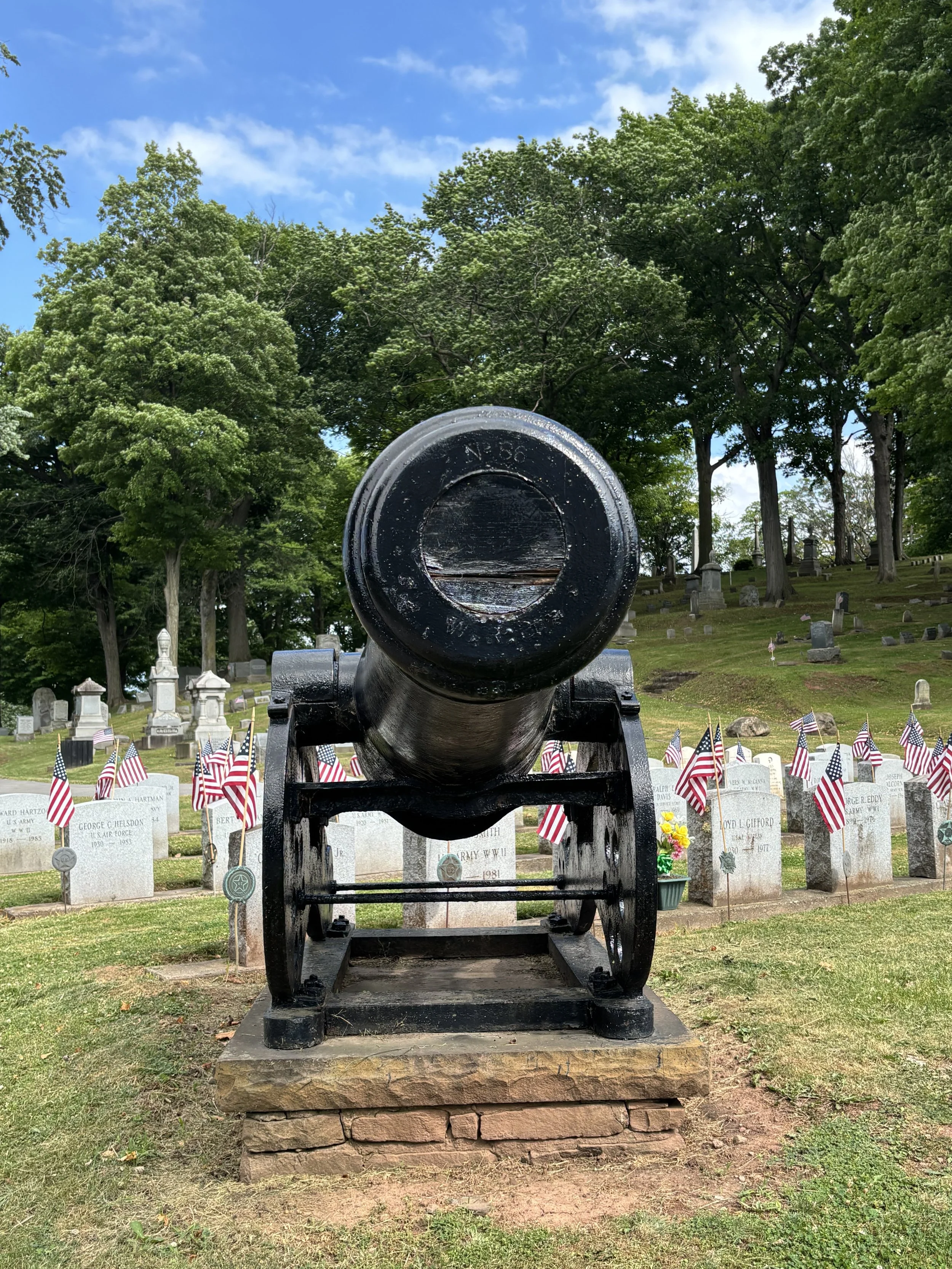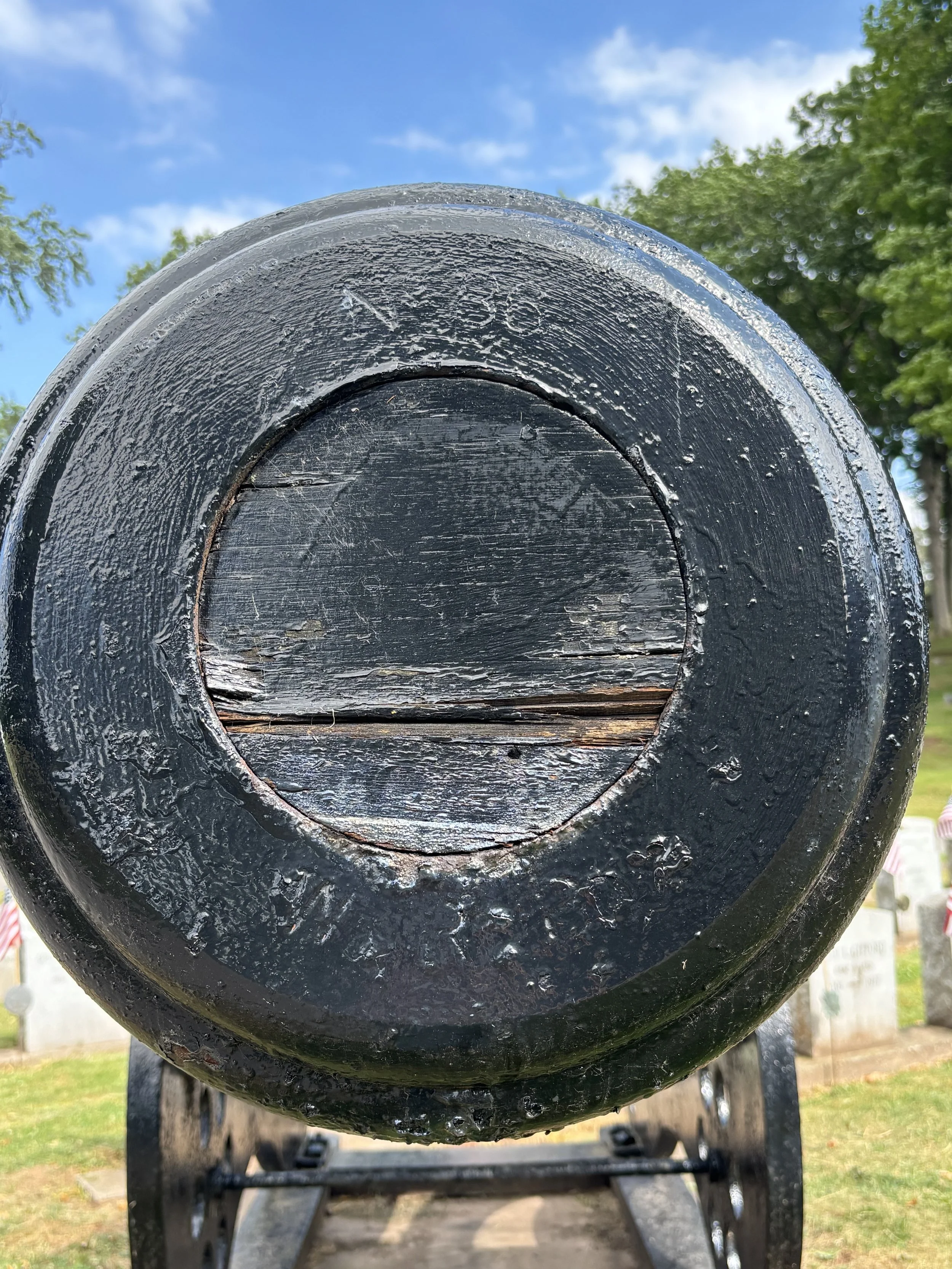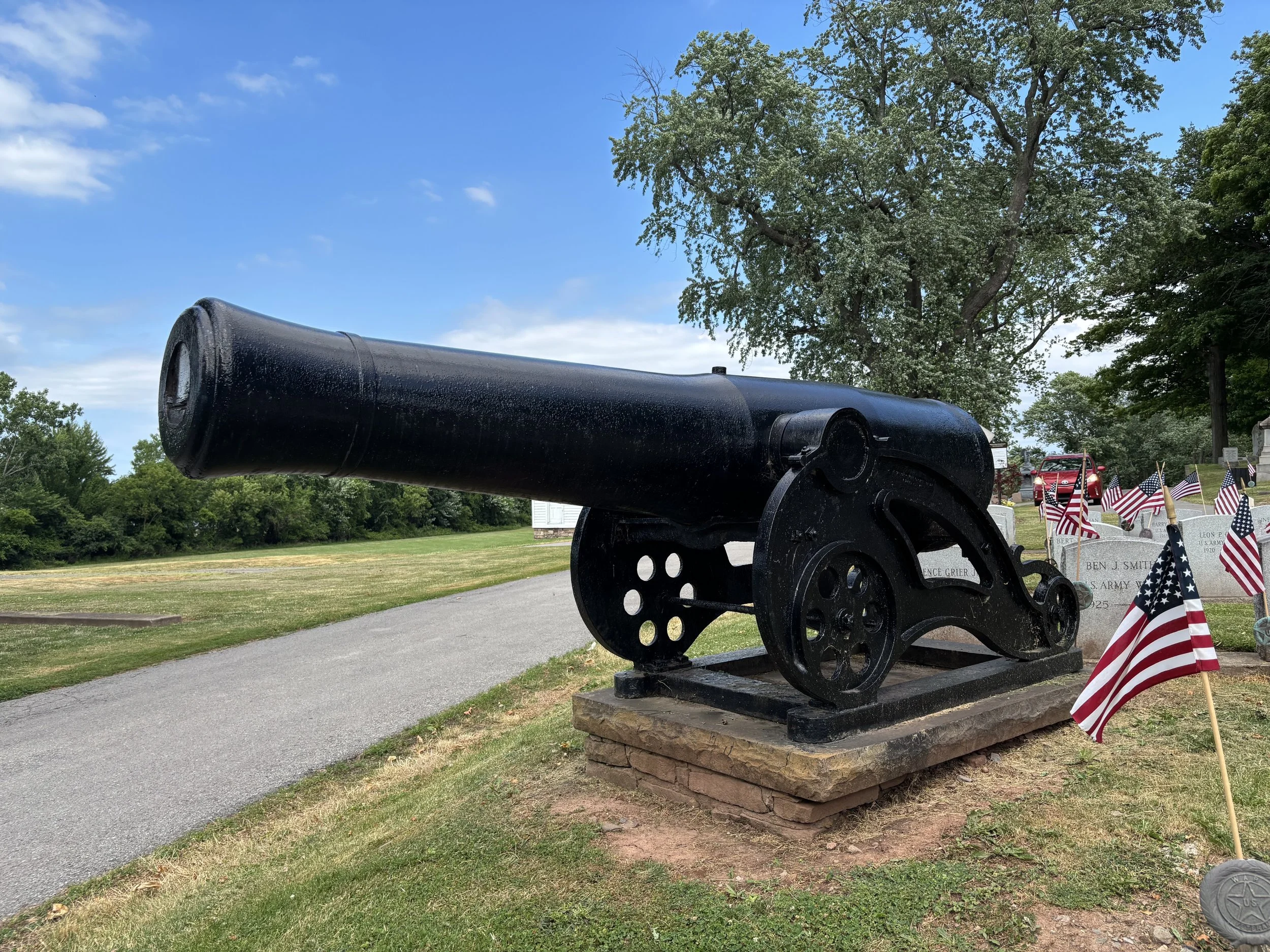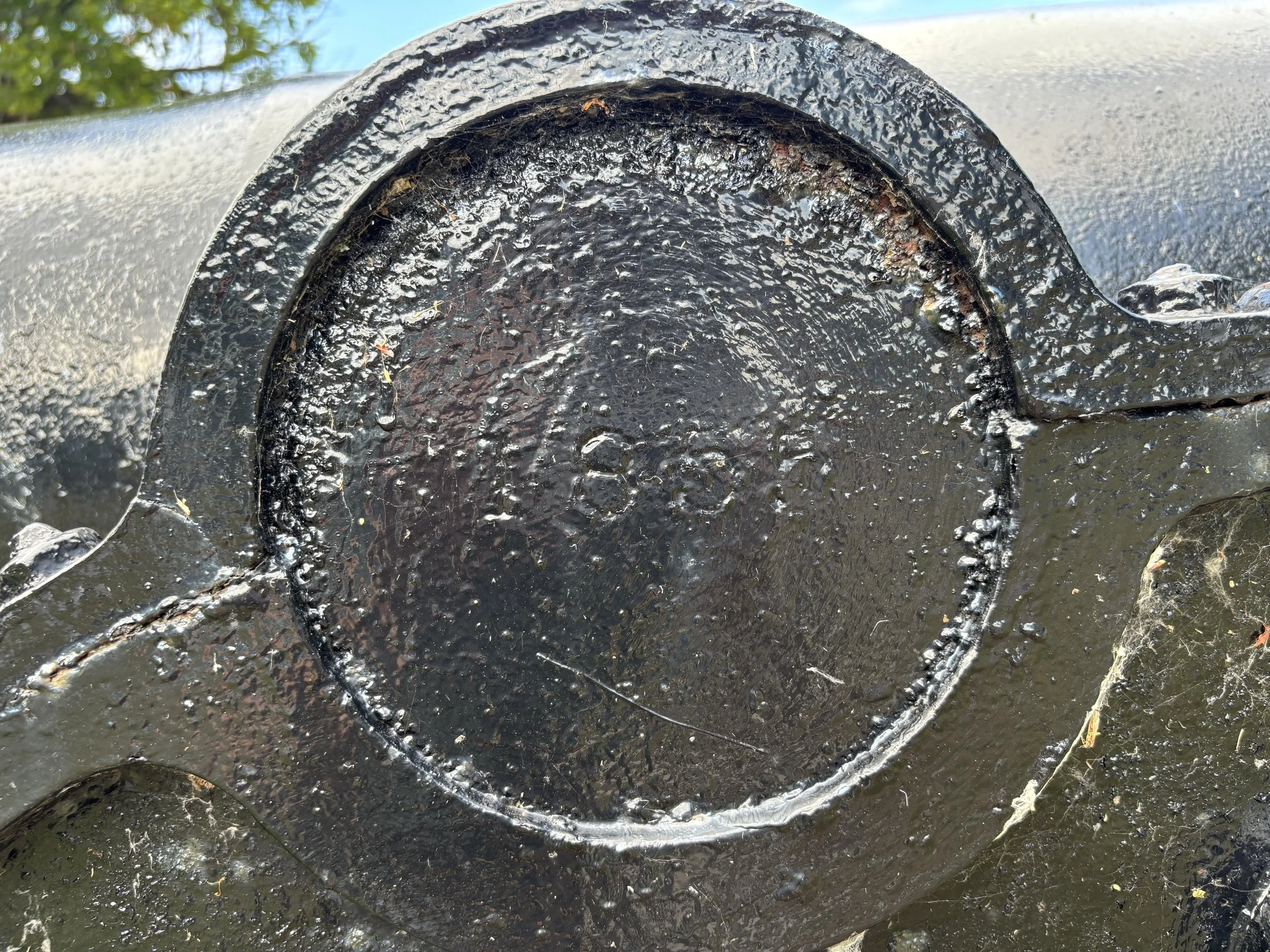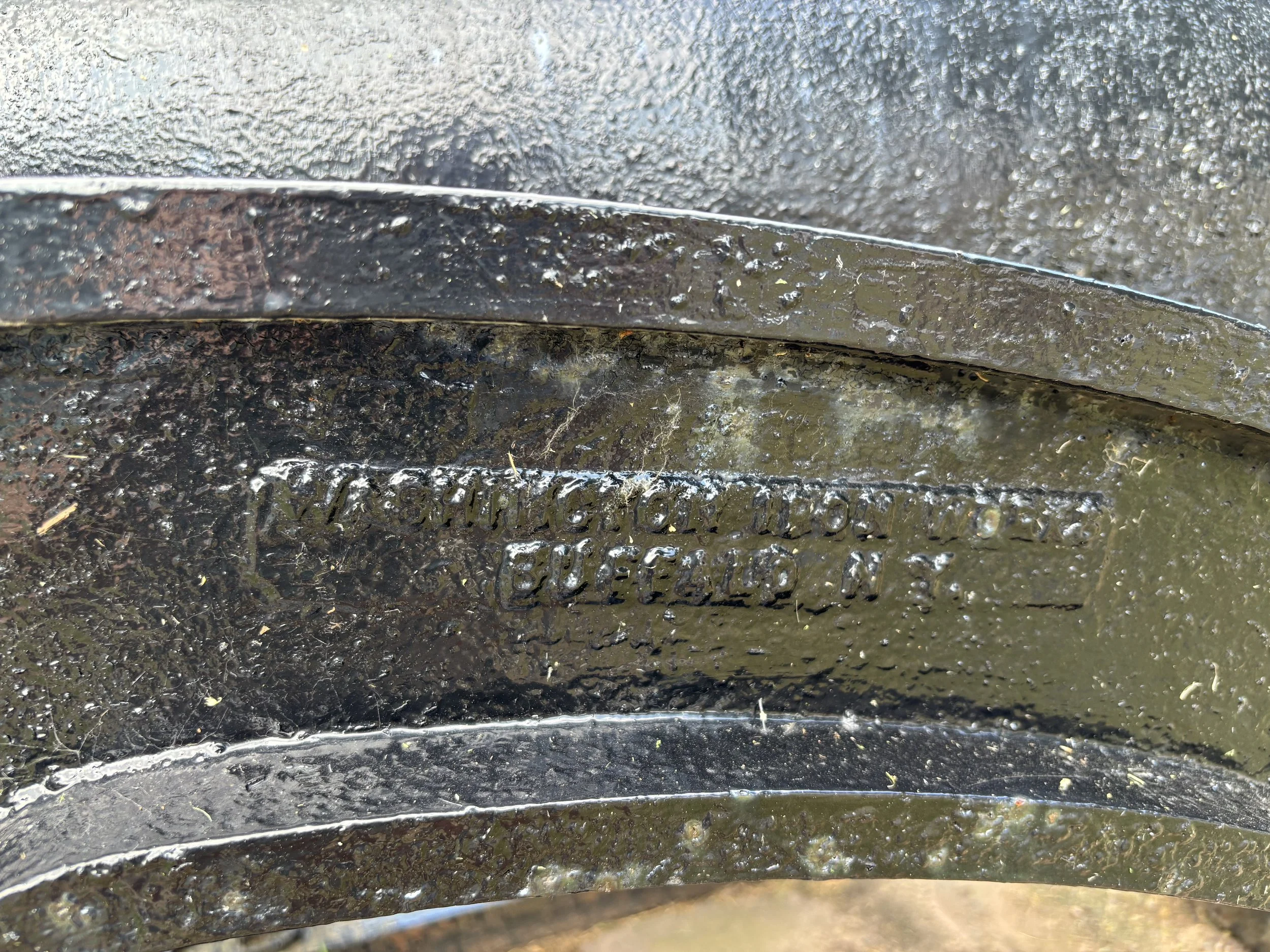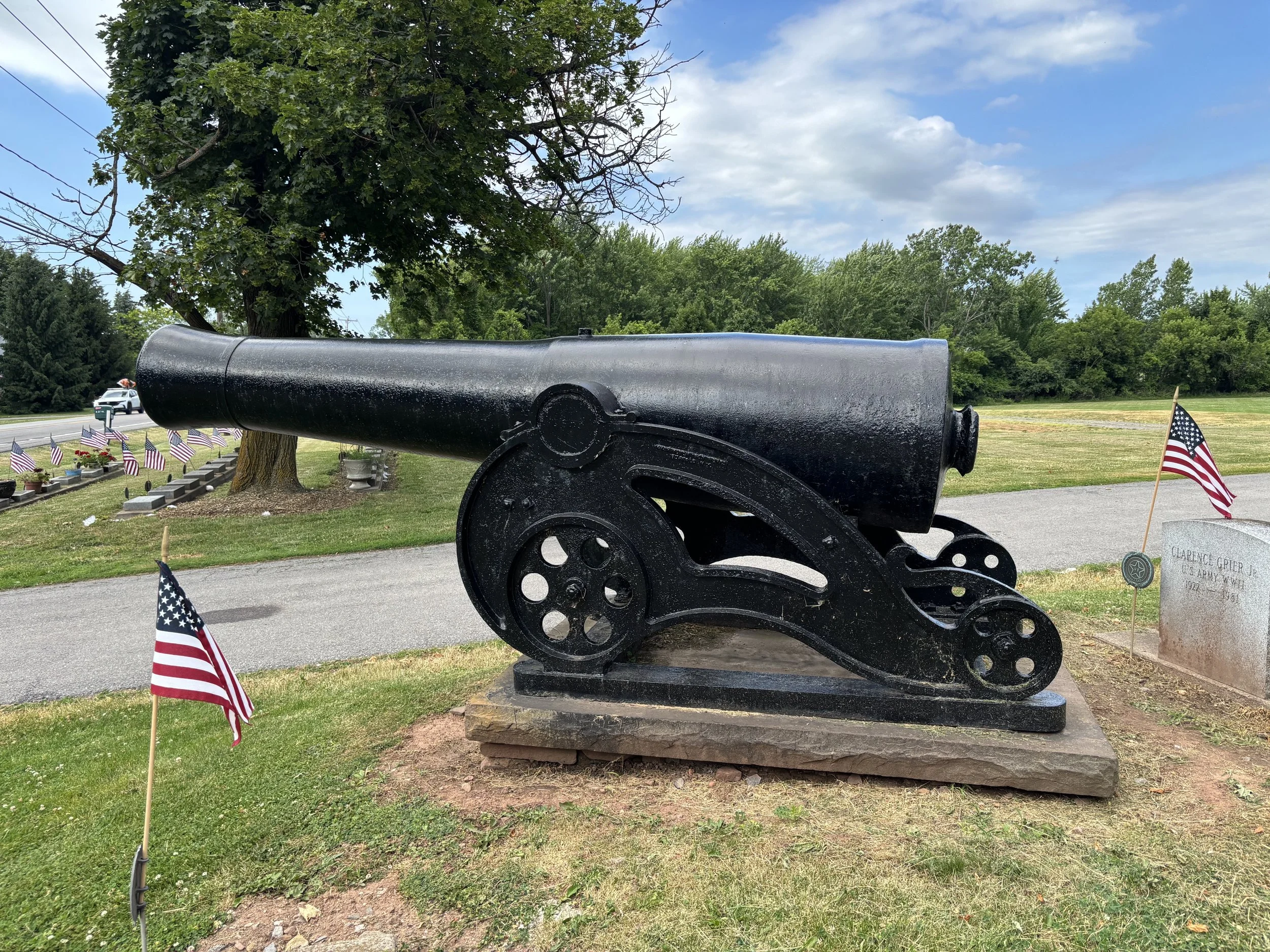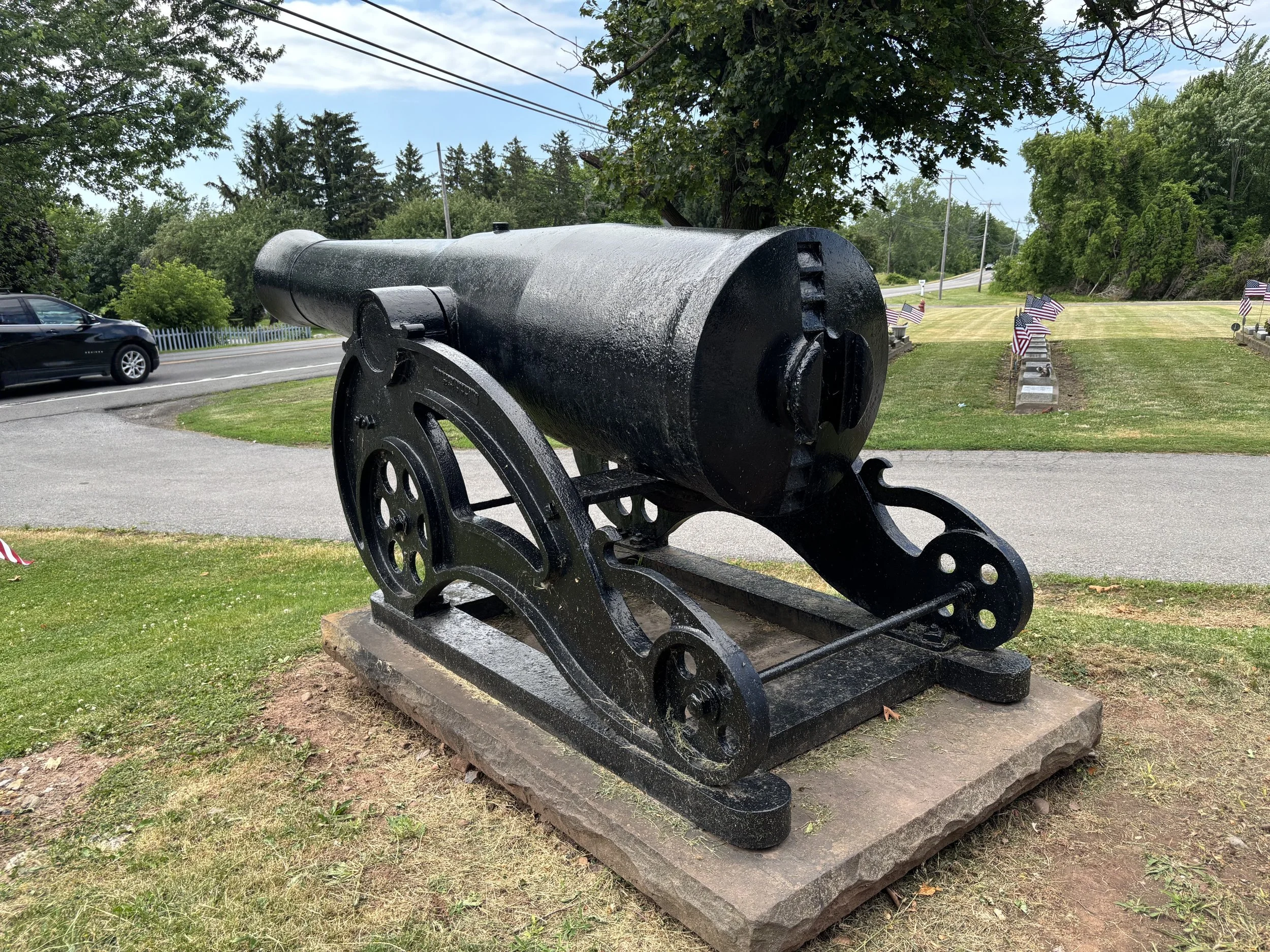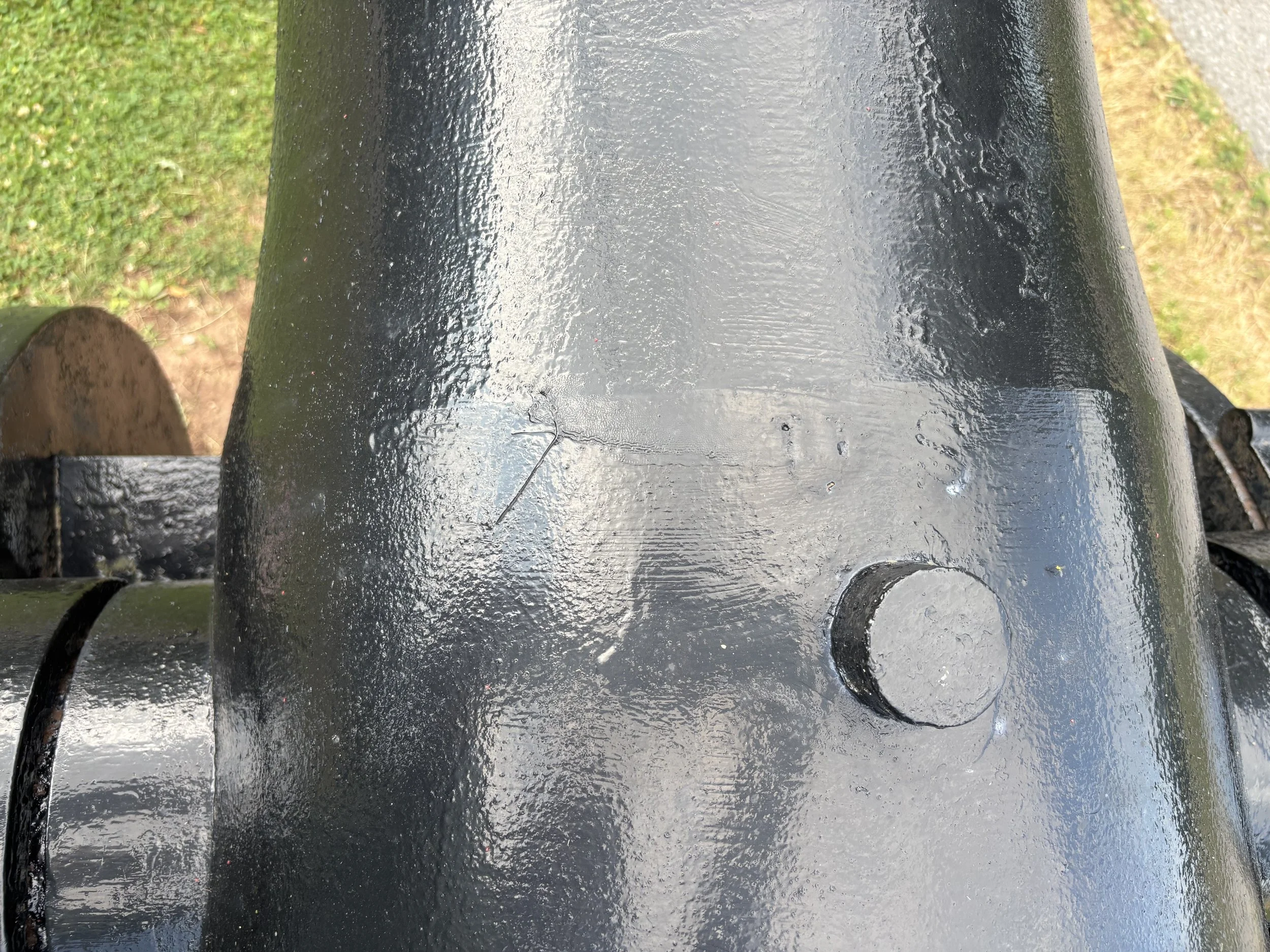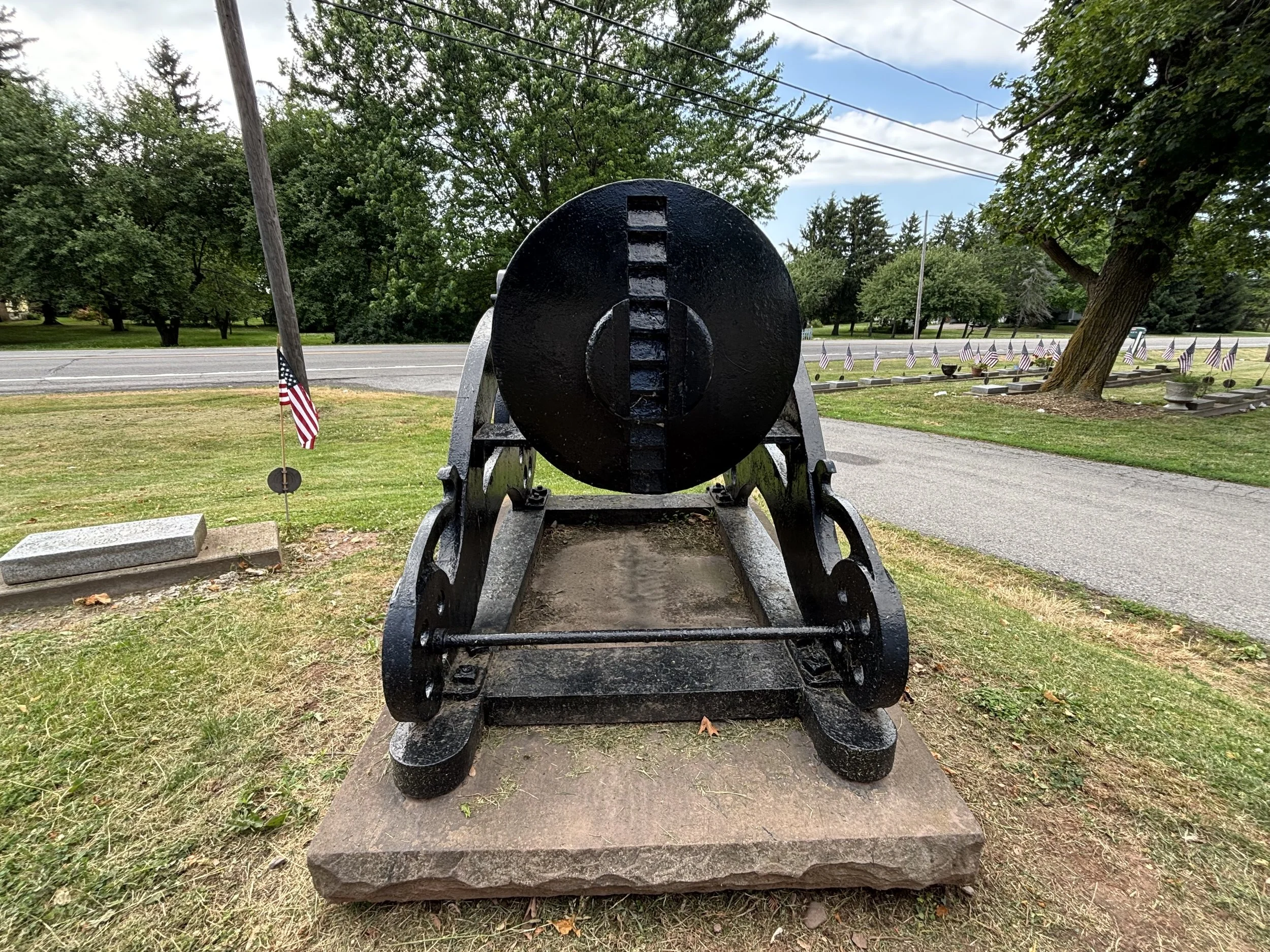The 8-Inch Columbiads, Pattern 1844, of Medina, New York
Two 8-Inch Columbiads, Pattern 1844, flank the gates to a cemetery in Medina, New York. Number 86 is nearer while Number 83 is in the background.
Note: The photos of the cannons in Medina, New York were taken by Elias Doll. Many thanks to him for the photographs!
Two US Army 8-Inch Columbiads, Pattern 1844, guard the veterans section of and flank the gates to a cemetery in Medina, New York. They are mounted on ornamental iron pedestals which were made to resemble stylized carriages. The pedestals were produced by the Washington Iron Works in Buffalo, New York.
The two cannons are:
Number 83, manufactured by West Point Foundry in 1885, weight as manufactured 9,222 pounds, inspected by William Robertson Boggs.
Number 86, manufactured by West Point Foundry in 1885, weight as manufactured 9,202 pounds, inspected by William Robertson Boggs.
They are both marked with “US” on top of the barrel near the trunnions.
Both were donated to the S.J. Hood Post of the Grand Army of the Republic by the US Army Ordnance Department on October 16th, 1897. (See Annual Report of the Chief of Ordnance 1899 Appendix 3 Pg. 58. Thanks to the Living History Registry for directing me to that report.) The cannons were sent from the New York Arsenal.
The only (potential) newspaper reference which I have seen to the donation of the cannons is a brief mention of two cannons from the Brooklyn Navy Yard being placed in the Village Cemetery in Medina (Orleans Republican, 10 November 1897, Page 3.) If the newspaper is referring to these cannons, the reporter confused the Army and Navy installations in New York.
At the time that the photographs were taken - summer 2025 - the cannons and the nearby graves of veterans had been decorated for the Fourth of July with United States flags. Many thanks to the volunteers and/or staff who watch over these graves and the cannons which guard them.
The 8-Inch Columbiad, Pattern 1844
Two 8-Inch Columbiads, Pattern 1844, may be seen in the center of this image taken on the parapet of Fort Sumter shortly after the April of 1861 battle. Detail of larger image available here: https://www.loc.gov/item/2015650219/
The term “Columbiad” originally referred to heavy cannon (a 50-pounder) developed in 1811 by the Columbia Foundry on the Potomac River. The term came to refer heavy US Army cannons intended for seacoast defense and capable of firing “the full range of projectiles” including explosive shells, solid shot, and grape shot.
The Pattern 1844 8-Inch and 10-Inch weapons are the first generally referred to as proper Columbiads (at least in Ripley and Olmstead et al.). The Pattern 1844 Columbiads were chambered cannons, meaning their is a chamber for a propellant charge at the breech of the cannon that is of smaller diameter than the rest of the bore.
The ratcheted breech allowed for the Columbiad to be fired at very high elevations - up to 40 degrees. The ratchets meant that the cascabel is split down the middle. This split cascabel, which was used as a mounting point for a rope when the cannon needed to be lifted, proved to be a weak point of the design. The broken cascabels of some surviving Columbiads testifying to their being insufficient to support the weight of the cannon.
Though intended to be capable of firing an approximately 64-pound solid shot when required, the 8-Inch Columbiad’s primary projectile was an explosive shell of approximately 50 pounds. This spherical, hollow projectile had a fuse which was ignited by the discharge of the propellant charge. In an ideal circumstance, the shell would impact the wooden side of a ship and become embedded in the side before exploding. The goal was to tear a huge, jagged hole in the ship’s side that, if near the waterline, might be able to sink even the largest ship with a single shell.
In US Army service, the Pattern 1844 proved to be somewhat weaker than ideal. It was replaced with an improved “New Columbiad” in 1857/1858. In 1861, a new series of cannons designed by Thomas Jackson Rodman was introduced to the US Army. Rodman’s guns, though sometimes called Columbiads, were of far superior strength and design and were fully capable of firing solid shot - an attribute which became important as iron-armored ships emerged.
The 8-Inch, Pattern 1844, though being superseded in US Army service by the time of the Civil War, saw considerable service in examples captured by the Confederates when they seized US Army forts in 1861. The above photo shows two examples captured at Fort Sumter. One of the type is still at the fort and likely has been since before the war.
For further reading see:
Olmstead, Edwin, Stark, Wayne E., Tucker, Spencer C. The Big Guns: Civil War Siege, Seacoast, and Naval Cannon. Museum Restoration Service, 1997.
and
Ripley, Warren, Artillery and Ammunition of the Civil War (4th Edition). The Battery Press, 1984.
8-Inch Columbiad Number 83
8-Inch Columbiad, Pattern 1844, Number 83 in Medina, New York
Additional Photos of 8-Inch Columbiad Number 83:
8-Inch Columbiad Number 86
8-Inch Columbiad, Pattern 1844, Number 86 in Medina, New York
Additional photos of 8-Inch Columbiad, Pattern 1844, Number 86:
The two 8-Inch Columbiads viewed from the Road
The two 8-Inch Columbiads viewed from the Cemetery.
